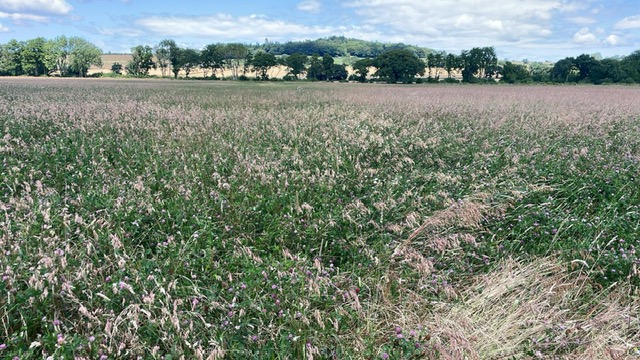June 2025
It has been over a year since my last DD article and rather a lot has happened in that time which is affecting all businesses and especially farming. I think there are opportunities out there if you are prepared to take on the challenge but there is a lot of uncertainty in the industry and amongst farmers.
One positive has been that we did get our capital grant accepted earlier this year, so we will be improving some of the infrastructure around the farm which will help when we are left to farm without any support from government. With such a dry spring and summer, it has been very noticeable where we don’t have permanent water supplies on arable ground that is now into grass. A lot of 20L drums and IBC’s have been carried around, so we look forward to cracking on with some of the work to improve this.
Last Autumn we got the cover crops and turnips planted in good time, every single turnip seed must have germinated, so I had high hopes but there was a lot of leaf and not much turnip bulb. I did wonder whether this was due to competition as a high number of plants established, the seed rate was not that high, but from what I have heard from other farmers it sounds like it was a common problem last winter, loads of leaf and small bulbs.
To extend the winter grazing we added westerwolds into our mixed species cover crops, which was a great addition. The other species produced a good amount of biomass that the sheep grazed off during the winter, the westerwolds were hidden in under the other species. After the initial grazing the westerwolds then came into its own, providing a 2nd grazing a month or so later, and then we had a 3rd grazing while ewes were lambing in early April before the field went into maize. On another field we had similar experience with multiple grazes and even a small cut of silage bales before going in with a late spring SFI option mix.
We were a bit tight with winter grazing so the additional grazing off the westerwolds were very beneficial, we were also supplementing the turnips with additional bought in fodder beet. Adding westerwolds will be repeated again this year especially where later spring crops will follow.
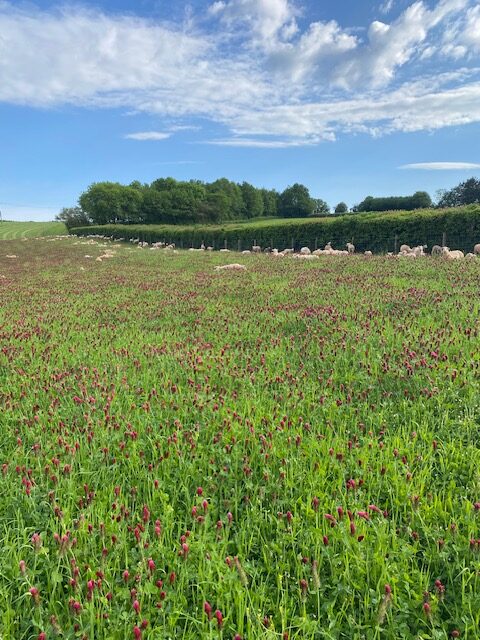
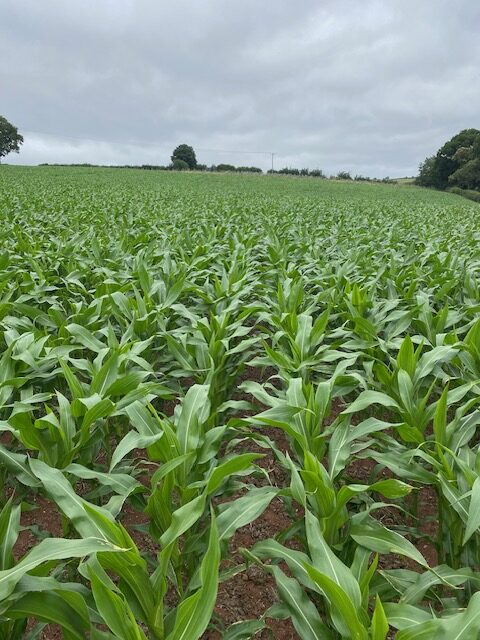
The maize was established using a Grange Machinery Strip till perpetrator and then drilled with a normal maize drill on 50cm rows. I really like this method of growing maize, as a lot of the ground remains untouched which hopefully will conserve moisture especially in a spring like we’ve just had. The ground conditions will also be firmer making easier travelling when it comes to harvest time in the autumn which will hopefully mean less ruts and compaction from the trailers. The maize has done well this year despite the dry weather and certainly knee high by 4th July.
The winter wheat looks good other than a few war wounds from the wet winter in the usual places. Not sure where the yield will be, but it needs to be reasonable to help with the low prices. One block of wheat after maize did suffer more than the rest and I couldn’t look at it for the rest of the season, so it went in with spring barley.
Having direct drilled (with some low disturbance subsoiling) since 2018, after the maize was cut it then rained solid for 3 weeks. To try and dry the ground out to get the wheat established we did run some tine and discs through in November. This turned out to be a mistake, with heavy rain following drilling we ended up with gullies across the fields, which we hadn’t seen since before we started direct drilling, and to top it off the wheat also didn’t come to much and went to spring barley as mentioned.
We planted a new herbal Ley into worn out arable ground last autumn, it was slow to get going over winter but come mid-April it was flying. We were in the process of permanent fencing the perimeter of these fields and we didn’t want to put ewes and lambs in there behind electric fencing due to lots of footpath users and their dogs (they are now fenced out of the grazing area) so the herbal Ley got away a bit. A lot of discussion was had as to whether it was too far forward and a waste for grazing with ewes and lambs and whether we should cut and bale instead. We ended up doing half field of each, cutting half and grazing half in small sections on the same day. Once the sheep got into it they loved it, they trampled quite a bit, it looked a mess but this turned out to be a positive, as this trampled material protected the ground from the heat and provided a quicker regrowth than where it had been cut. We were certainly meeting the “eat a third, trample a third and leave a third”. The silage bales were bloody lovely, but we don’t really have a need for silage as sheep are out all year. So sometimes you have to think differently from “tidy farming” and next year the ewes and lambs will be getting the best grub from the herbal leys before any goes into a silage bale.
I appreciate a lot of the country has suffered badly from the very dry spring and early summer, we are fortunate to be in the SFI and I am pleased that I decided to reduce the spring cropping and opt for some of the SFI options instead, especially with the way crop prices have fallen and the dry weather continued.
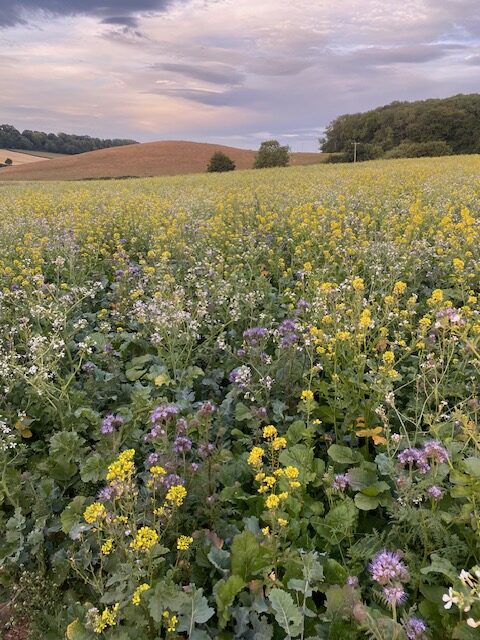
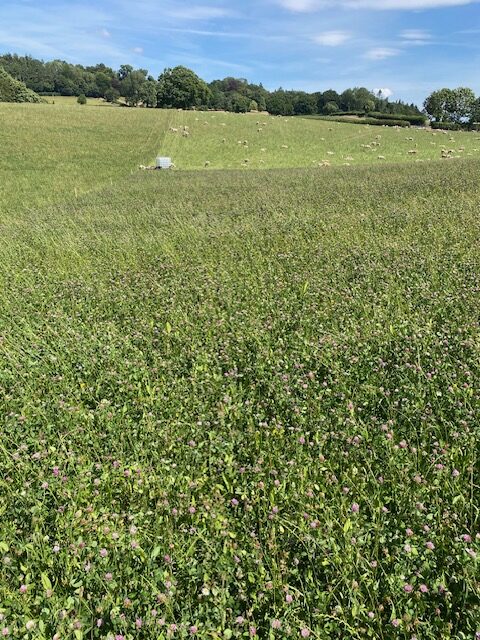
These SFI and Mid-Tier schemes suit us quite well at the moment, but it is very concerning (from a financial and for wildlife point of view) what will be around the corner in 18 months – 2 years’ time when our schemes come to an end. We have been in some form of Environmental Stewardship for 25 years, and if there is no funding for this going forward then a lot will have to be taken out and go back into food production. If this is scaled up over the whole country, then the wildlife and nature will decline going forward if the environment that they thrive on is removed from the system. But then the government don’t seem to want home grown food either!! So where will things end up in a few years’ time when the government actually decides what route they want farmers to take. They probably want to do away with us altogether. Farmers have certainly taken a good beating from government recently.
On that note I hope everyone has a safe and good harvest with increasing prices to follow later in the year. Fingers crossed.


